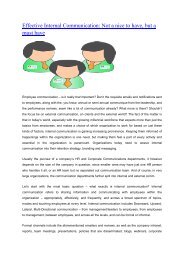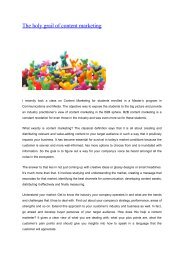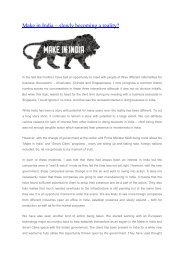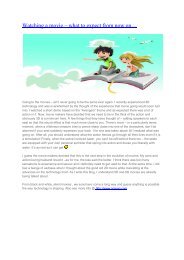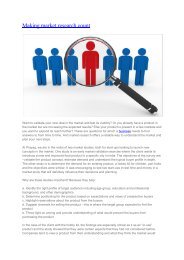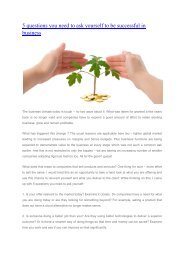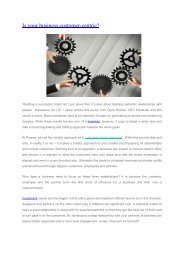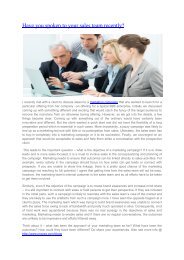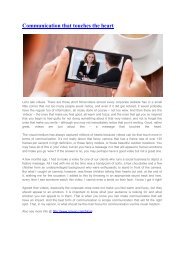Leveraging User Communities to Create Deep Business Impact
User communities, per se, are not a new phenomenon. They have existed in the real world for years, but in more passive forms. Wherever there are products, there are users, and inevitably users would get together to discuss their experiences with the product. Housewives deriding the local grocer, students comparing the attributes of their pens, and even office-goers arguing over the usability of a particular brand of laptop are all user communities in their most basic form.
User communities, per se, are not a new phenomenon. They have existed in the real world for years, but in more passive forms.
Wherever there are products, there are users, and inevitably users would get together to discuss their experiences with the
product. Housewives deriding the local grocer, students comparing the attributes of their pens, and even office-goers arguing
over the usability of a particular brand of laptop are all user communities in their most basic form.
You also want an ePaper? Increase the reach of your titles
YUMPU automatically turns print PDFs into web optimized ePapers that Google loves.
<strong>User</strong> communities, per se, are not a new phenomenon. They have existed in the real world for years, but in more passive forms.<br />
Wherever there are products, there are users, and inevitably users would get <strong>to</strong>gether <strong>to</strong> discuss their experiences with the<br />
product. Housewives deriding the local grocer, students comparing the attributes of their pens, and even office-goers arguing<br />
over the usability of a particular brand of lap<strong>to</strong>p are all user communities in their most basic form.<br />
Even in these loose forms, user communities were able <strong>to</strong> create some impact on products and manufacturers. Peers<br />
were influenced in tech hardware buying decisions, the local grocer’s business might have suffered from housewives’ tales of<br />
ants in the lettuce. This impact, however, was on a rather small scale.<br />
In the internet age, virtual communities and users are able <strong>to</strong> make their presence felt in a much bigger way. And <strong>to</strong>day, with<br />
the advent of Web 2.0 led collaboration, virtual user communities are stronger than ever. Never before have users wielded so<br />
much power. <strong>Business</strong>es have duly taken notice of this and are learning how <strong>to</strong> leverage the power of these virtual communities<br />
for their own benefit.<br />
One of the first companies <strong>to</strong> effectively utilize this power was Propellerhead Software, a developer of computer-controlled<br />
musical instruments including <strong>to</strong>ols for sound production,<br />
processing and recording. In 1999, Propellerhead launched<br />
Propellerhead recognized<br />
ReBirth, a software for sound processing and recording. The<br />
the potential in co-creation<br />
product code was initially unavailable <strong>to</strong> users. An impromptu<br />
and tapped it effectively.<br />
user community was formed on the Internet, for users of<br />
the product, <strong>to</strong> share tips and queries. But very soon, this<br />
community became the hub for something else. A group of<br />
computer-savvy members began <strong>to</strong> collaborate <strong>to</strong> try and<br />
hack in<strong>to</strong> the product’s source code. This process <strong>to</strong>ok 6-8 months with numerous users contributing <strong>to</strong> the effort.<br />
Finally, when the product had been successfully hacked, users began <strong>to</strong> create their own personalized versions with<br />
cus<strong>to</strong>m graphic designs and sound samples. The Propellerhead management, though surprised at the development,<br />
responded positively. They realized that they would be able <strong>to</strong> benefit from such product innovations, with more variety<br />
added by responsible users.<br />
This incident subsequently triggered the opening up of parts of their product code <strong>to</strong> users interested in modifying the<br />
product – the company even began encouraging users <strong>to</strong> send in cus<strong>to</strong>mized versions <strong>to</strong> them for review. Co-created<br />
updates of ReBirth were released in the market and these sold fast.<br />
The Propellerhead example highlights the power of user communities and the necessity for a business <strong>to</strong> recognize<br />
opportunities for furthering business objectives. It may be argued that Propellerhead <strong>to</strong>ok a gamble in encouraging the<br />
‘hackers’ instead of acting against them, but they were able <strong>to</strong> distinguish opportunity from threat and this eventually paid<br />
off.<br />
This paper will investigate the ways in which businesses can similarly utilize such communities <strong>to</strong> their advantage, as<br />
Propellerhead did. Along the way, we will discuss this in the context of implemented examples, including some from the<br />
Indian context.<br />
<strong>User</strong> <strong>Communities</strong> for Brand Building<br />
www.prayag.com




